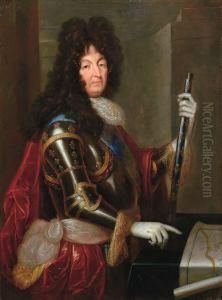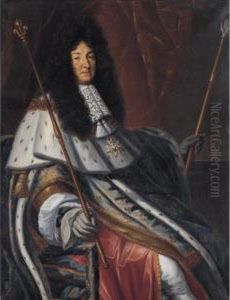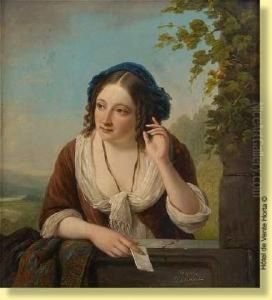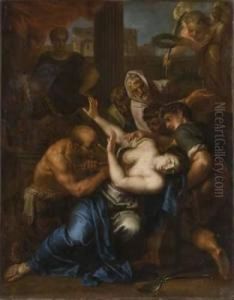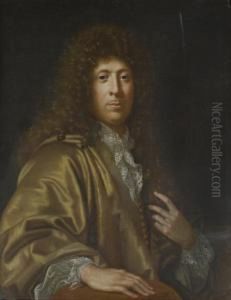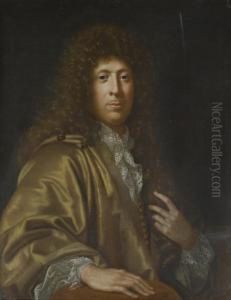Henri Le Jeune Testelin Paintings
Henri Testelin, often referred to as Henri Le Jeune (the Younger) to distinguish him from his elder brother Louis, was born in Paris, France, in 1616. He was part of a prominent family of artists and craftsmen; his father, Gilles Testelin, was a painter and the secretary to the king's chamber and cabinet, while his brother, Louis Testelin, also achieved recognition as a painter. Henri Testelin is most notably associated with the academic and courtly circles of his time, reflecting the intellectual and artistic vibrancy of the 17th century in France.
Henri Testelin was a key figure in the French Royal Academy of Painting and Sculpture, serving as its secretary for many years. This position allowed him to exert significant influence over the artistic direction and educational standards within the academy. He was instrumental in organizing the academy's educational programs, emphasizing the importance of drawing from life and studying the works of the old masters. Testelin himself was a competent painter, although his reputation today rests more on his role as an educator and administrator than on his individual artistic achievements.
In addition to his contributions to the academy, Testelin is remembered for his writings on art, particularly his biography of Charles Le Brun, the premier peintre du roi (First Painter to the King) and the dominant artistic figure in France during much of Testelin's lifetime. This work not only provides insights into Le Brun’s life and works but also offers a valuable perspective on the artistic milieu of the era. Testelin's portrayal of Le Brun underscores the close ties between art, politics, and power in the court of Louis XIV, the Sun King, whose patronage of the arts was central to his rule.
Henri Testelin's artistic legacy includes a number of portraits and historical paintings, notable for their formal rigor and adherence to the classical principles espoused by the Academy. His portraits of Louis XIV and other members of the French nobility and intellectual elite capture the grandeur and idealism characteristic of French Baroque art. Despite the overshadowing fame of contemporaries like Le Brun, Testelin’s work contributed to the rich tapestry of 17th-century French painting.
Henri Testelin passed away in Paris in 1695. While perhaps less famous than some of his contemporaries, his contributions to the French art scene, both through his administrative efforts at the Royal Academy and his theoretical writings on art, have ensured his place in the history of French art. Through his work, Testelin played a part in shaping the principles and practices that would guide French artists well into the modern era.
